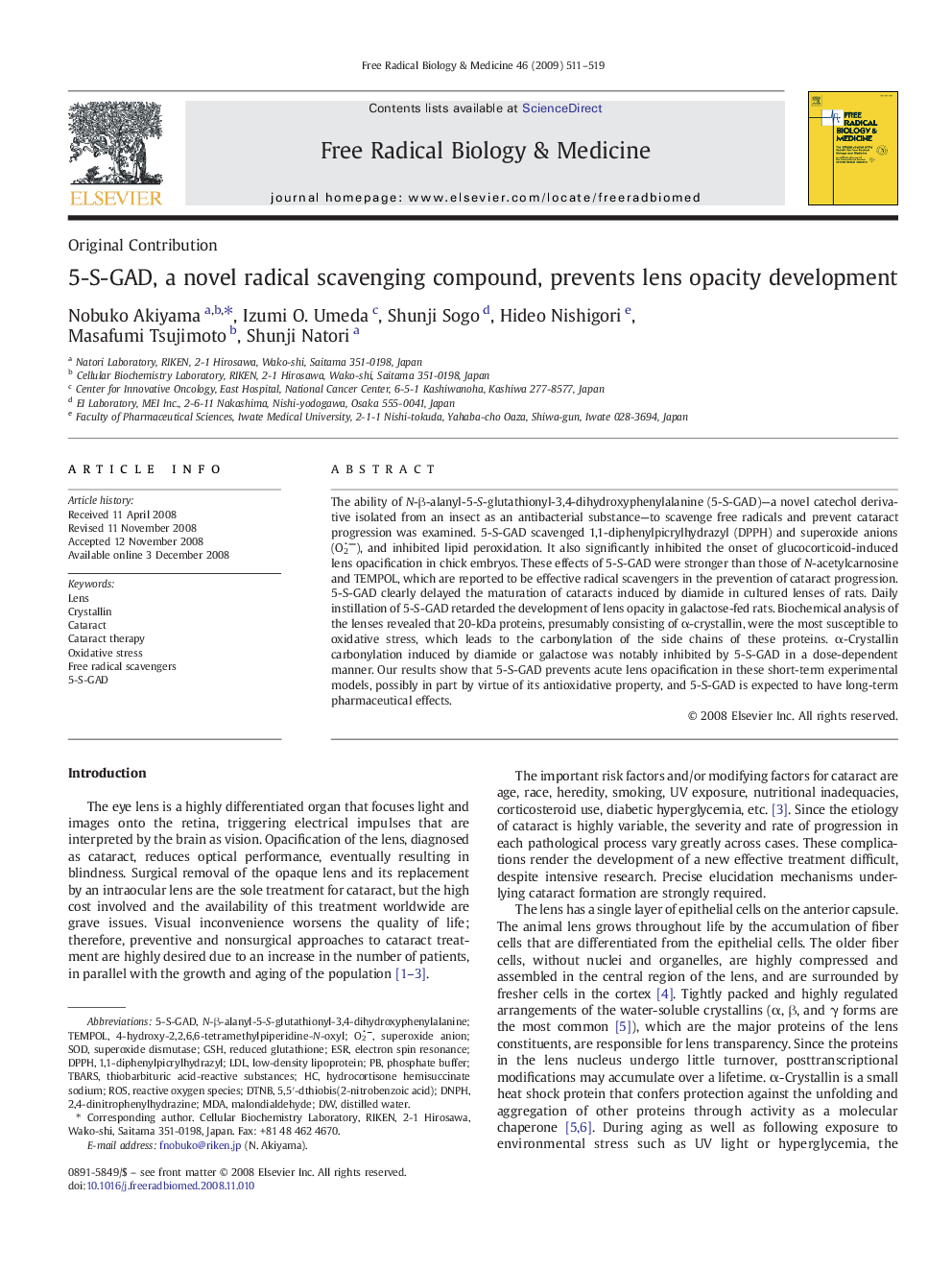| Article ID | Journal | Published Year | Pages | File Type |
|---|---|---|---|---|
| 1910318 | Free Radical Biology and Medicine | 2009 | 9 Pages |
The ability of N-β-alanyl-5-S-glutathionyl-3,4-dihydroxyphenylalanine (5-S-GAD)—a novel catechol derivative isolated from an insect as an antibacterial substance—to scavenge free radicals and prevent cataract progression was examined. 5-S-GAD scavenged 1,1-diphenylpicrylhydrazyl (DPPH) and superoxide anions (O2−), and inhibited lipid peroxidation. It also significantly inhibited the onset of glucocorticoid-induced lens opacification in chick embryos. These effects of 5-S-GAD were stronger than those of N-acetylcarnosine and TEMPOL, which are reported to be effective radical scavengers in the prevention of cataract progression. 5-S-GAD clearly delayed the maturation of cataracts induced by diamide in cultured lenses of rats. Daily instillation of 5-S-GAD retarded the development of lens opacity in galactose-fed rats. Biochemical analysis of the lenses revealed that 20-kDa proteins, presumably consisting of α-crystallin, were the most susceptible to oxidative stress, which leads to the carbonylation of the side chains of these proteins. α-Crystallin carbonylation induced by diamide or galactose was notably inhibited by 5-S-GAD in a dose-dependent manner. Our results show that 5-S-GAD prevents acute lens opacification in these short-term experimental models, possibly in part by virtue of its antioxidative property, and 5-S-GAD is expected to have long-term pharmaceutical effects.
